Wing It This Summer
By Amy White
The global chicken wings market is currently valued at over a billion dollars, a far cry from the early 20th century, when wings were often used as scraps or even just thrown away in favor of meatier chicken breasts and thighs. The origin story of wings as we now know and love them started in New York in 1964, when the owner of Buffalo’s Anchor Bar, Teressa Bellissimo, was in search of a late-night snack for her son. She deep-fried some chicken wings that she had put aside for making stock and tossed them in a homemade sauce made from hot sauce and butter. The rest, as they say, is history.
National Chicken Wing Day on July 29 celebrates the popularity of wings and brings attention to the role they play in American culture. Whether they’re crispy, saucy or smoked to perfection, chicken wings have become a comfort food favorite as well as a must-have staple at food trucks, sports bars and other casual dining spots. There are even national chain restaurants dedicated to serving this now famous food. As demand for chicken wings has grown, so has the variety of methods for cooking them and flavors to add to them. The original Buffalo wing, with its spicy, buttery sauce, has given way to infinite creative, global flavors involving every herb, spice and condiment imaginable. Many restaurants are branching out beyond chicken wings as well. Turkey wings, which are larger and meatier than their chicken counterparts, and duck wings, which are a richer option with a unique flavor, are starting to grace menus across the nation. There are even health-conscious alternatives to chicken wings, such as boneless wings (sometimes called chicken tenders) made from chicken breast meat, and plant-based wing substitutes made from cauliflower, soy or seitan.
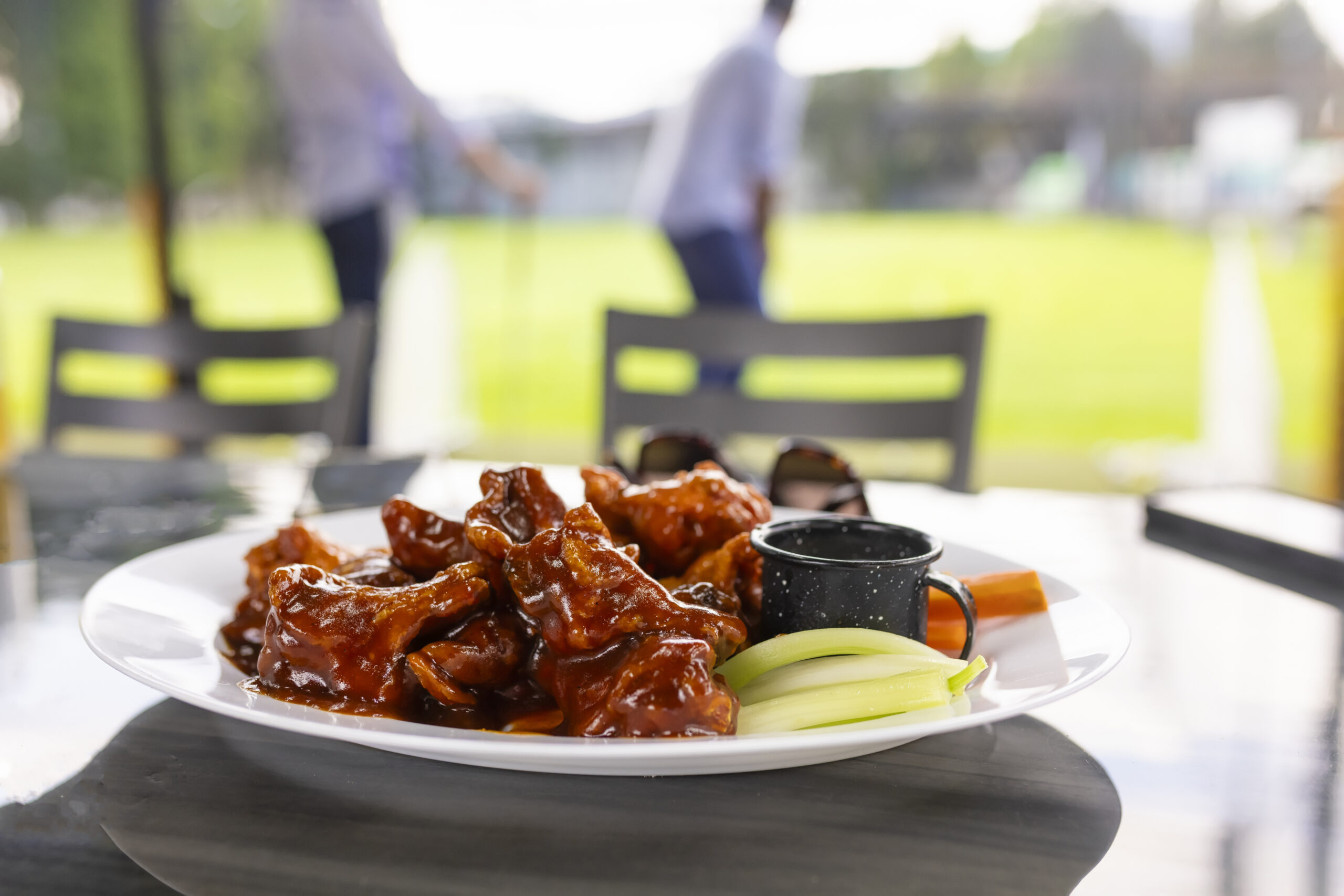
There are also various wing cooking methods (see below). While cooking methods certainly bring different flavors and textures to wings, most people consider wings to be the perfect blank canvas to an infinite number of dry rub and sauce possibilities. Dry rubs are made from salts, sugars, herbs and spices, offering a burst of flavor in a less messy bite. Sauces involve using condiments like hot sauce or barbecue sauce as a base and then adding in other flavors in the form of fruit juices, alcohol or other flavoring ingredients. If there is a flavor combination out there, it begs to be on a chicken wing. Creative culinary minds are thinking up more and more outrageous ones every day. Whether the flavoring is a dry rub or sauce, it’s best to toss hot, cooked wings well until they are thoroughly coated and then serve.
Keep reading to find out different ways to cook wings at home as well as over two dozen wings sauce and dry rub recipes to help “wing it” all summer long. Special thanks to Chef Ben Dubow, executive director of Forge City Works in Hartford (which runs the social enterprise restaurant Fire by Forge), who offered us several suggestions for different types of wing sauces and rubs. And another special thanks to Bob Sulick, owner of Mulberry Street Pizza in Manchester, who gave us the recipe for one of their famously unique wing sauces.
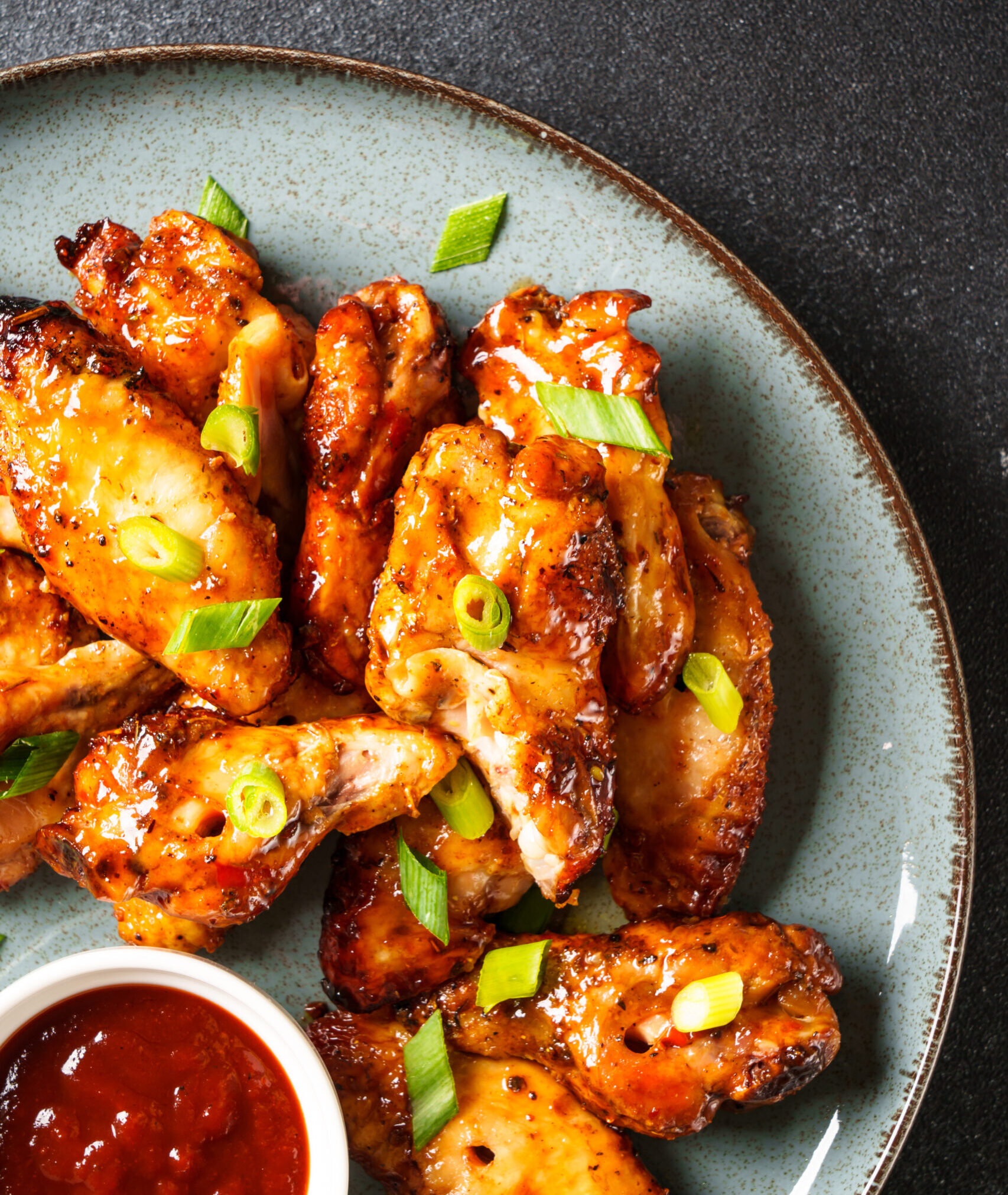
How to Cook Wings
There are many delicious ways to cook wings, each offering different textures and flavors. The instructions that follow are for typical chicken wings, but the same methods can be used to cook any variety of wing (turkey, duck, plant-based) with cooking times adjusted for the size and type of wing.
Note: No matter the cooking method, the first step is to pat the wings dry with paper towels. This step is crucial for all cooking methods, as it helps ensure crispier wings. Also, it is fun to experiment with more than one cooking method. Many people swear by baking them until they are just cooked through, then frying them. Smoke then grill ‘em. Grill then fry ‘em. Bake then broil or airfry ‘em. The goal is a crispy outside, juicy inside wing that will only get better with whatever flavor is added to them.
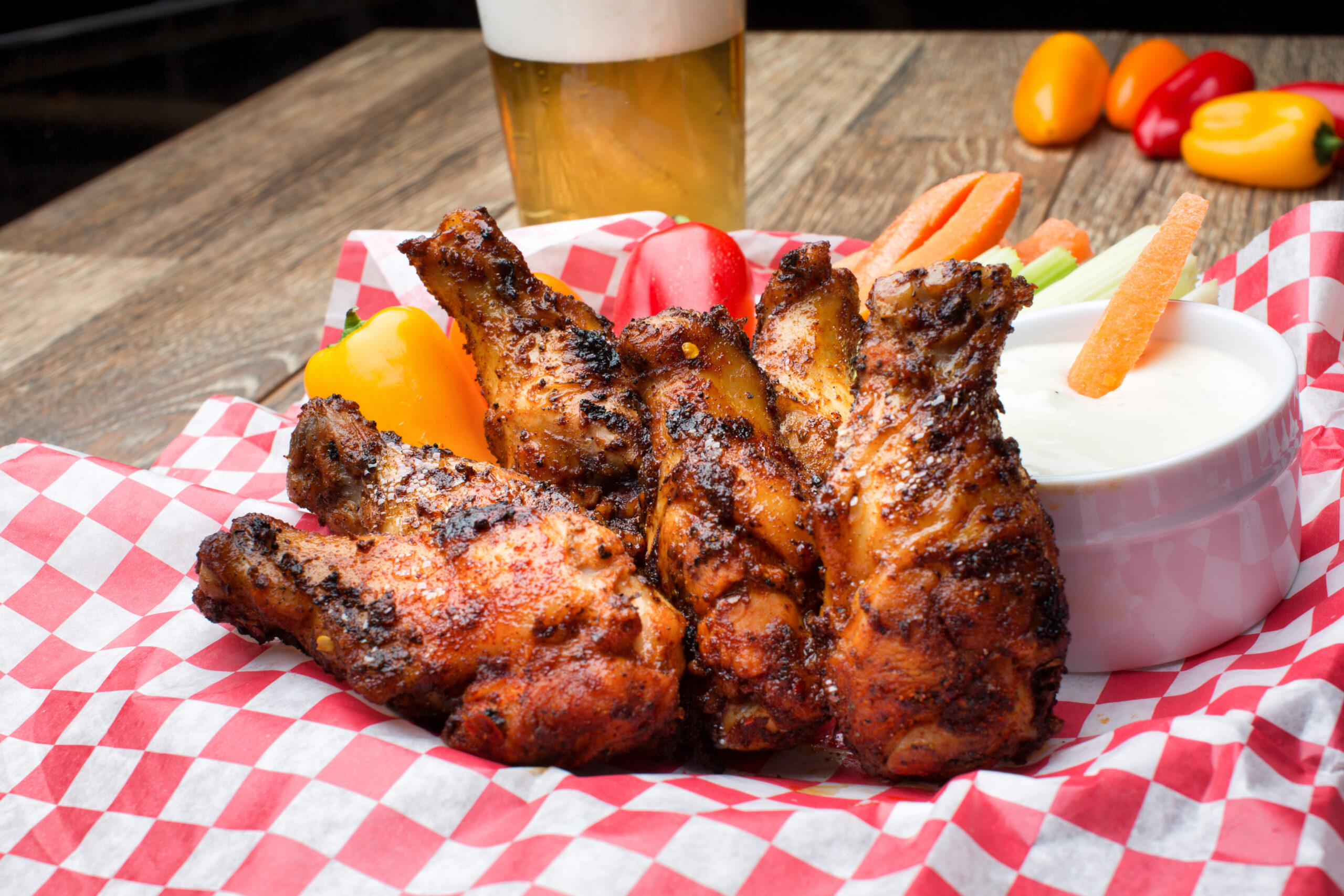
Fried: This is one of the most common methods, where wings are deep-fried until golden and crispy on the outside but with juicy tender meat inside.
- Season the dry wings with salt, pepper, or any mix of herbs and spices. Coat them in seasoned flour, breading (breadcrumbs or crushed corn flakes, for example), or cornstarch for extra crispiness. Alternatively, leave them plain.
- Heat enough cooking oil in a pot, skillet or frying appliance to submerge the wings. Aim for a consistent 375°F.
- Fry the wings by carefully lowering them into the hot oil using tongs or a slotted spoon. Don’t overcrowd the pan, as this can cause the temperature of the oil to drop and make the wings soggy. Fry in batches instead, for 10-12 minutes each batch, depending on the size of the wings and desired crispiness. Make sure they cook all the way through, with an internal temperature of at least 165°F.
- Drain the wings on paper towels to absorb excess oil.
- Toss in sauce or a dry rub and serve while they’re still hot.
- For an even crispier texture, fry the wings once, let them rest a few minutes and then fry them again. Some places will even sauce them in between, which is known as “dirt” style.
Air-Fried: An air fryer cooks chicken wings with little to no oil, using hot air circulation to create crispy skin. It’s a healthier and faster alternative to deep-frying.
- Season the dry wings with salt, pepper, or any mix of herbs and spices. Coat them in seasoned flour, breading (breadcrumbs or crushed corn flakes, for example) or cornstarch for extra crispiness. Alternatively, leave them plain.
- Preheat the air fryer to 400°F.
- Place the wings in a single layer in the fryer basket and air-fry the wings for 15-20 minutes, flipping halfway through. Make sure they cook all the way through, with an internal temperature of at least 165°F. Work in batches as needed.
- Toss in sauce or a dry rub and serve while they’re still hot.
Baked: Baking chicken wings is a healthier alternative to frying while still achieving a crispy exterior. Baking also allows for easy flavor customization by tossing wings in a favorite sauce or seasonings before baking.
- Season the dry wings with salt, pepper, or any mix of herbs and spices. Coat them in seasoned flour, breading (breadcrumbs or crushed corn flakes, for example) or cornstarch for extra crispiness. Alternatively, leave them plain.
- Place wings in a single layer on a baking sheet fitted with wire rack which will allow for better air circulation.
- Bake at 425°F for about 30 minutes, flipping halfway through, until they are golden brown and cooked through with an internal temperature of at least 165°F. For extra crispy skin, broil for the final 5 minutes or so.
- Toss in sauce or a dry rub and serve while they’re still hot.
Grilled: Grilling chicken wings gives them a smoky flavor in addition to a charred, crispy skin. Marinate the wings before grilling or simply season them with dry rubs or sauces, grilling them like any other piece of chicken.
- Marinate the wings if desired, or season the wings with salt, pepper, or any mix of herbs and spices.
- Heat the grill to medium-high (about 400°F).
- Grill for 30 minutes, flipping occasionally until they are cooked through with an internal temperature of at least 165°F.
- Slather on sauce for the final minutes of grilling if desired, then serve while they’re hot.
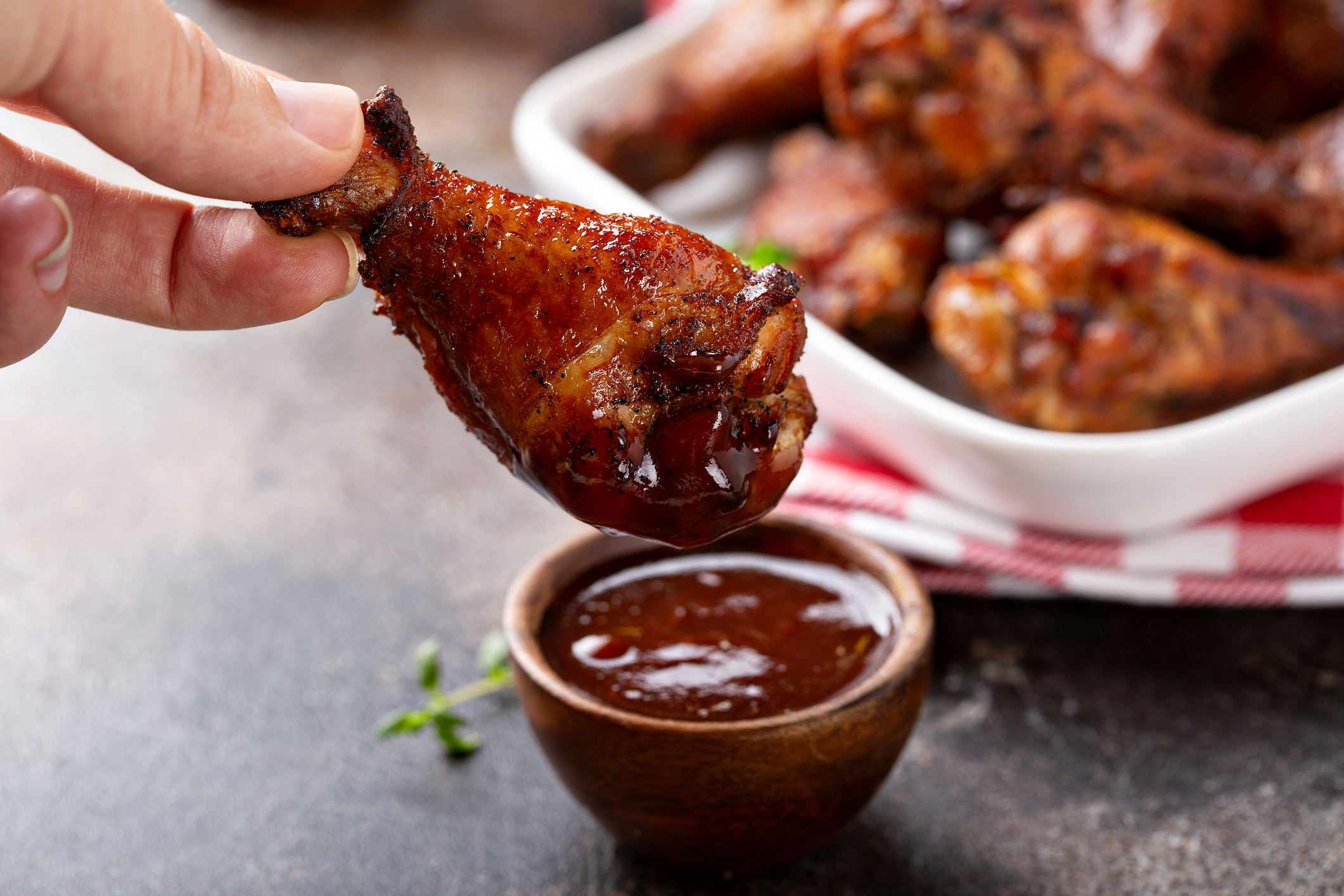
Smoked: Smoking chicken wings infuses them with a rich, deep smoky flavor. This method takes a bit longer than grilling but results in tender, juicy wings with a unique flavor. Use wood chips (like hickory or applewood) to smoke the wings in a smoker or on a grill set up for indirect heat.
- Marinate the wings if desired, or season the wings with salt, pepper, or any mix of herbs and spices.
- Prepare the smoker with wood chips according to the manufacturer’s instructions and place the wings inside.
- Smoke the wings for one hour at 225°F, flipping about halfway through.
- Turn up the heat to 350°F and cook another 20 minutes to get a crispy exterior skin and ensure that they are cooked through with an internal temperature of at least 165°F.
Famously Unusual Peanut Butter Ginger Wing Sauce
Recipe courtesy of Bob Sulick, owner of Mulberry Street Pizza in Manchester

- 1 cup peanut butter
- 1 cup sesame ginger salad dressing
- ½ cup lemonade
- 1 tablespoon hot sauce
- ½ teaspoon salt
- ½ teaspoon black pepper
Recipes contributed by Chef Ben Dubow of Forge City Works in Hartford

Hot Sauce Base
Ingredients:
- ½ cup butter (unsalted)
- ¼ cup olive oil
- 1 tablespoon vinegar (apple cider or white vinegar)
- 1 tablespoon honey or maple syrup
- ½ teaspoon garlic powder
- ¼ teaspoon salt
- ¼ teaspoon black pepper
Instructions:
In a saucepan over low heat, melt the butter and olive oil together. Stir in the remaining ingredients and simmer for 2-3 minutes until fully combined and smooth. Use this base sauce as a starting point for the following variations. You can adjust the ingredients to your taste or add additional spices for extra depth of flavor.
>>Hot Sauce Variations
– Classic Buffalo Hot Sauce
- ½ cup hot sauce base
- 1 tablespoon Worcestershire sauce
- ½ teaspoon cayenne pepper (optional for extra heat)
– Spicy Mango Hot Sauce
- ¼ cup hot sauce base
- ¼ cup mango puree
- 1 tablespoon lime juice
- ½ teaspoon chili powder
– Garlic Parmesan Hot Sauce
- ¼ cup hot sauce base
- ¼ cup grated parmesan cheese
- ½ teaspoon garlic powder
– Chipotle Hot Sauce
- ¼ cup hot sauce base
- 2 tablespoons chipotle peppers in adobo sauce (chopped)
- 1 tablespoon brown sugar
>>BBQ Sauce Variations
Directions:
Instead of hot sauce, use BBQ sauce as the base and add flavors for different BBQ wing experiences.
– Classic BBQ Sauce
- ½ cup BBQ sauce (store-bought or homemade)
- 1 tablespoon apple cider vinegar
- 1 tablespoon honey
– Honey Mustard BBQ
- ½ cup BBQ sauce
- ¼ cup honey mustard
- 1 tablespoon Dijon mustard
-Smoky Bourbon BBQ
- ½ cup BBQ sauce
- ¼ cup bourbon (or substitute with apple juice)
- 1 tablespoon smoked paprika
- 1 tablespoon brown sugar
– Spicy Jalapeño BBQ
- ½ cup BBQ sauce
- 1 tablespoon finely chopped jalapeños
- ½ teaspoon cayenne pepper
- 1 tablespoon honey
-Pineapple BBQ
- ½ cup BBQ sauce
- ¼ cup pineapple juice
- 1 tablespoon soy sauce
- 1 tablespoon brown sugar
– Buffaque
- ½ cup BBQ sauce
- ½ cup hot sauce base
>>Asian Sauce Variations
Directions: Instead of hot sauce, use soy sauce and other Asian-inspired flavors for wings with a savory, umami-packed punch.
– Sweet Chili Asian Sauce
- ¼ cup soy sauce
- ¼ cup sweet chili sauce
- 1 tablespoon rice vinegar
- 1 tablespoon sesame oil
– Ginger-Sesame Asian Sauce
- ¼ cup soy sauce
- 1 tablespoon grated fresh ginger
- 1 tablespoon honey
- 1 tablespoon sesame oil
- 1 tablespoon rice vinegar
– Teriyaki Asian Sauce
- ½ cup teriyaki sauce
- 2 tablespoons honey
- 1 tablespoon sesame seeds
- 1 tablespoon rice vinegar
– Spicy Korean Gochujang Sauce
- 2 tablespoons soy sauce
- 2 tablespoons Gochujang (Korean chili paste)
- 1 tablespoon rice vinegar
- 1 tablespoon honey
- 1 tablespoon sesame oil
– Lemon Garlic Soy Sauce
- ¼ cup soy sauce
- 2 tablespoons lemon juice
- 2 cloves garlic (minced)
- 1 tablespoon honey
- 1 tablespoon sesame oil
>>Sweet & Savory Sauce Variations
Directions: Combine the following ingredients without a base sauce for a sweet and savory take on wings.
– Honey Garlic Sauce
- ¼ cup soy sauce
- ¼ cup honey
- 2 cloves garlic (minced)
- 1 tablespoon rice vinegar
- ½ teaspoon chili flakes (optional)
– Maple Balsamic Glaze
- ¼ cup maple syrup
- ¼ cup balsamic vinegar
- 1 tablespoon soy sauce
- 1 tablespoon Dijon mustard
– Brown Sugar & Soy Sauce
- ¼ cup soy sauce
- ¼ cup brown sugar
- 1 tablespoon Dijon mustard
- 1 tablespoon garlic powder
– Citrus Honey Glaze
- ¼ cup honey
- 2 tablespoons orange juice
- 1 tablespoon lime juice
- 1 tablespoon soy sauce
– Peach Bourbon Sauce
- ¼ cup peach preserves
- 2 tablespoons bourbon
- 1 tablespoon soy sauce
- 1 tablespoon brown sugar
>>Dry Rub Variations
Directions: Keep wings extra crispy by flavoring with a dry rub instead of a sauce.
– Classic Dry Rub
- 1 tablespoon garlic powder
- 1 tablespoon onion powder
- 1 teaspoon paprika
- 1 teaspoon smoked paprika
- ½ teaspoon salt
- ½ teaspoon black pepper
– Cajun Dry Rub
- 1 tablespoon paprika
- 1 teaspoon cayenne pepper
- 1 teaspoon garlic powder
- ½ teaspoon thyme
- ½ teaspoon onion powder
- ½ teaspoon salt
– Lemon Pepper Dry Rub
- 1 tablespoon lemon zest
- 1 tablespoon black pepper
- 1 teaspoon garlic powder
- ½ teaspoon salt
– Sweet & Spicy Dry Rub
- 1 tablespoon brown sugar
- 1 teaspoon chili powder
- 1 teaspoon paprika
- ½ teaspoon cayenne pepper
- ½ teaspoon salt
-Herb & Garlic Dry Rub
- 1 tablespoon dried rosemary
- 1 tablespoon dried thyme
- 1 teaspoon garlic powder
- 1 teaspoon onion powder
- ½ teaspoon salt
- ½ teaspoon black pepper



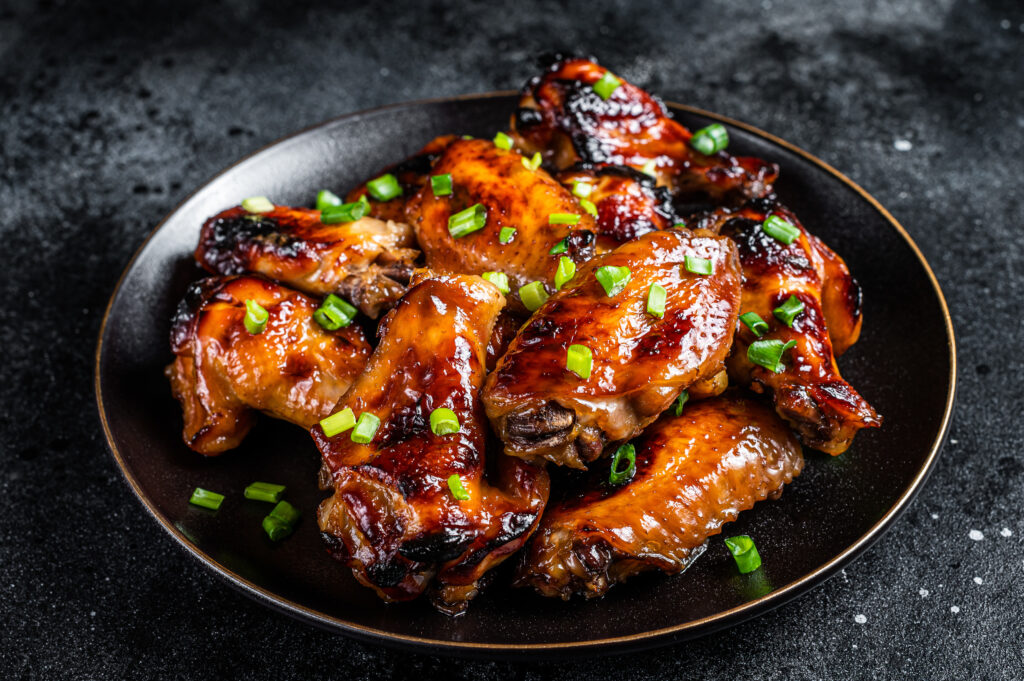




More Stories
Over 50, Underestimated: The Grandfluencers Redefining Age on Social Media
The Guardians of the Farm
Spring Pastas